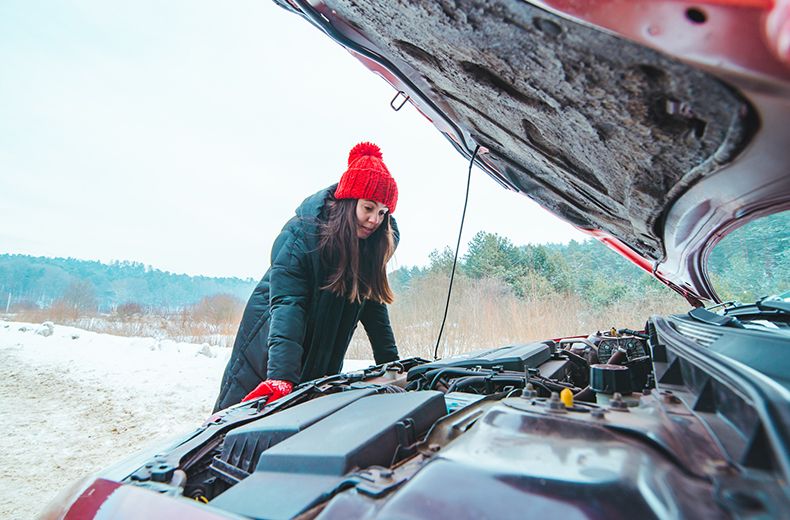Finding out why your car won't start in cold or freezing temperatures can be a challenge. However, with the correct advice and guidance, you can solve common starting problems and continue with your day.
In this how to guide, we take a look at the possible causes of why your car isn't starting, first looking at the most common cause – the battery.
Reasons why your car won't start in the cold
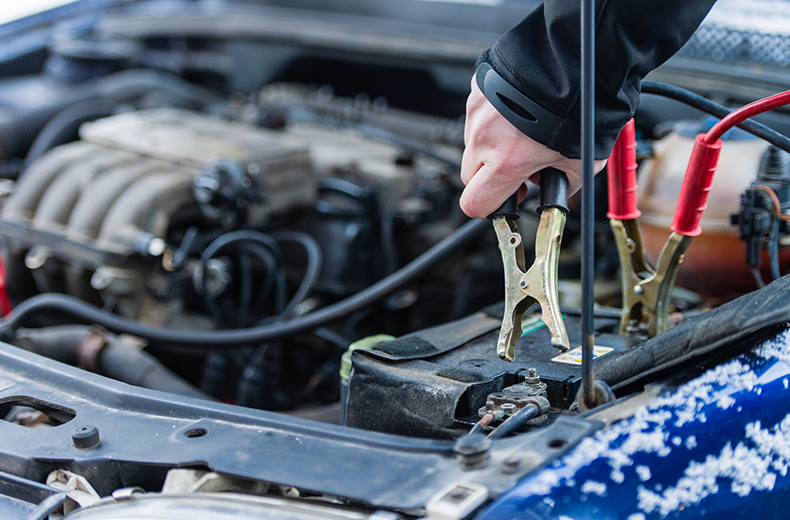
Car battery problems
If your car won’t start in cold conditions, by far the most likely cause is the battery. A vast number of RAC Patrol winter callouts are battery-related.
It may just be as simple as jump starting it or recharging the battery – let's look at the symptoms.
Signs your car battery has a problem
If you hear a faint whining noise when you turn the key in the ignition, but the starter motor doesn’t turn over, the likelihood is you have a flat battery.
If the battery is totally depleted, or the cables to the battery have come loose, you may not hear anything.
Further signs of a completely flat battery include the ignition lights on the dashboard failing to illuminate, and the car refusing to unlock via remote central locking.
Knowing what to do if you have a flat battery including how to tell you have one, is an important lessons to learn for all drivers.
How to fix car battery problems
If you are in a hurry and need to get moving fast, you can attempt to jump start your car. You will, however, need access to jump cables and another vehicle.
If you think your battery needs replacing, you can call 0333 2000 999 for The RAC Battery Fitting Service.
Alternatively, you can visit our car battery section to find out which product you need. We can deliver the battery to you, and fitting is free for RAC breakdown members.
How can I maintain my battery during the winter?
With more and more vehicle equipment demanding electricity, battery maintenance is more important than ever.
Cold temperatures affect the chemical process that produces and stores electricity inside the battery, slowing the battery down and reducing its ability to hold a charge.
If you are using your car regularly for short trips, it may be worth charging your battery at least once a week during the winter months, particularly if it is more than three years old.
Knowing how to charge car batteries can help you get out of a difficult situation without immediate need for a mechanic.
Older, weaker batteries will typically have reduced performance and cold temperatures can reduce this even further, to the point where the battery will discharge or go flat very quickly.
If you are finding your battery isn’t holding a charge very well, it might be time to replace it. We recommend visiting our car battery section or calling The RAC Battery Fitting Service on 0333 2000 999.
What else can I do to help my battery during winter?
A bit of basic preparation and maintenance can work wonders for battery life.
Remember to:
- Switch off all loads, including the lights, wipers, heater and radio before turning off your engine at the end of a journey. This prevents any unnecessary drain on the battery the next time you start up.
- Look for corrosion on the battery clamps and cables. This could restrict the flow of current. When the engine is off, clean it off using a wire brush, or ask a mechanic to do so.
- Check that everything is switched off before turning the ignition on.
- Avoid using heaters, heated screens and heated seats for longer than you have to. They all put high demands on the vehicle’s battery. Some satnavs, in-car DVD players and MP3 players can also drain the battery if left connected.
- Check that there are no interior lights (including boot lights) left on – or any accessories such as phone chargers left plugged in.
- Park your vehicle in a garage if you can, especially in very cold temperatures.
- Get your battery properly tested, particularly if it is over three years old.
And, sometimes it can be difficult just getting into your car. These two tips could save you some much-needed time:
- Use a little silicone-based furniture polish on the rubber door seals – it helps prevent doors getting stuck when it freezes. It’s best to apply with a cloth so you don’t spray polish on to the vehicle’s paintwork.
- If locks are frozen, try warming your key. You could also inject the lock with the appropriate anti-freeze or spray it with WD40.

RAC Breakdown Cover
Limited Time Offer
*£7 a month for new, single vehicle Basic cover. ^For 1 nominated vehicle when added to Extra or Complete cover. New customers only. Ends 29/04/24. 7am.

Car alternator problems
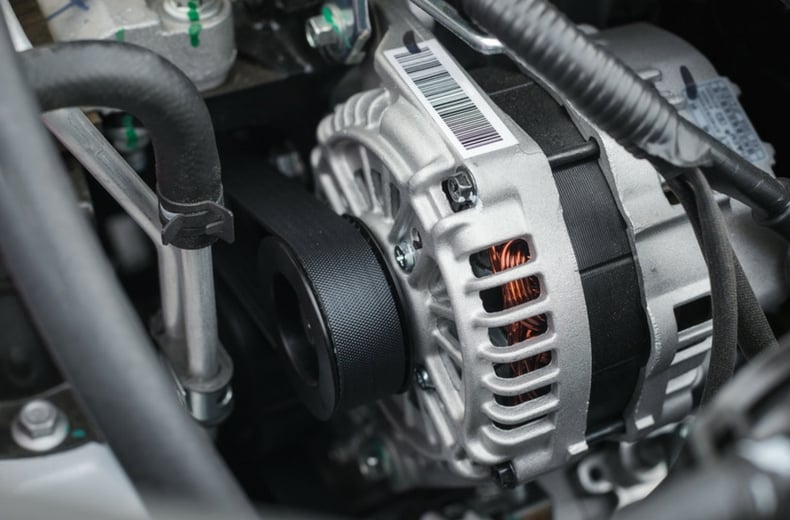
The alternator is an electrical generator that charges your car’s battery when the engine is running. If you have a relatively new battery and it keeps going flat, the problem probably lies here.
Signs your car alternator has a problem
If you jump start your car and the engine dies immediately, this points to a faulty alternator.
You may also notice your headlights and dashboard lights flickering, the car’s gauges moving in a jerky manner – and even a burning smell filtering into the cabin if the alternator has recently overheated.
How to fix car alternator problems
The alternator is connected to the battery and the engine, so, unless you’re an able mechanic, replacing one is a job best left to the experts.
It shouldn’t be difficult to source a new part, or you can opt to have your existing alternator reconditioned. The job shouldn’t take a garage more than two hours.
Starter motor problems
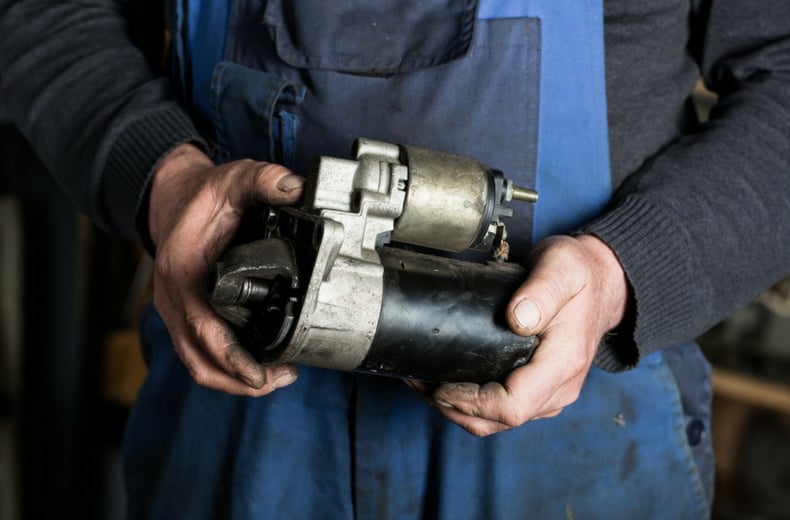
The starter motor does exactly what you’d expect; it uses electricity from the battery to jolt the car’s engine into life.
Many modern cars now have stop-start systems with stronger starter motors to cope with the demands of frequent engine on/off cycles in traffic.
Signs your starter motor has a problem
The most obvious sign of a broken starter motor is a clicking sound when you turn the ignition key, followed by the engine refusing to turn over and start.
If all the lights and in-car electrics are working fine, this also points to an issue with the starter motor – rather than the battery.
Even jump starting won’t work if the starter motor has failed.
Knowing car parts and what they do, is important for all car owners.
How to fix starter motor problems
Again, replacing a starter motor is generally a task for a trained mechanic.
They’re not hugely expensive, but the work may take up to half a day.
Your old starter is usually exchanged for a new one, which may look different; manufacturers sometimes modify the designs.
Car fuel system problems
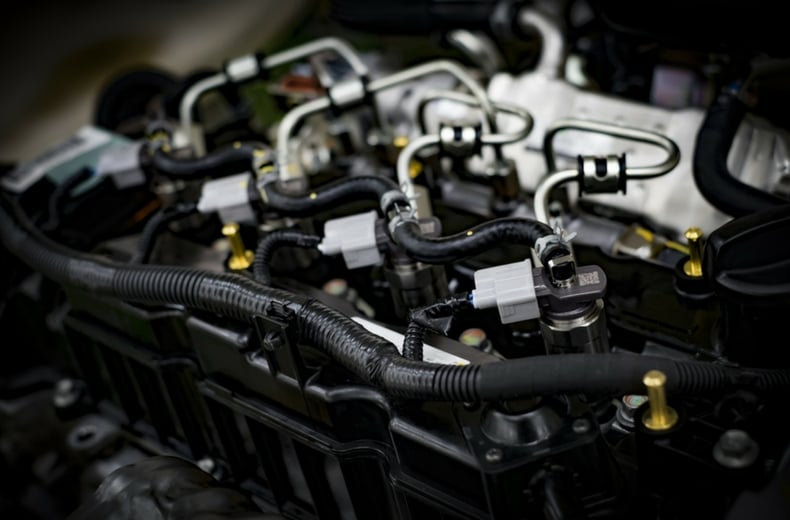
Over time, car fuel systems may become contaminated with water.
This can cause combustion problems and, if cold weather makes the water freeze, prevent the engine running altogether.
The issue is most acute in the fuel lines, which feed the individual injectors.
These are very narrow and can be blocked by tiny ice particles, starving the engine of fuel.
Signs your car fuel system has a problem
Aside from the engine not starting, other symptoms of fuel system problems include a stuttering engine – particularly when accelerating – and a generally jerky feel to the car’s power delivery.
The engine may even cut out altogether while driving.
How to fix fuel system problems
If your car has water in its fuel lines, you may need to have the system professionally flushed.
However, certain additives can reduce contamination by using alcohol to hold water in suspension, then passing it out through the exhaust.
You can cut the risk of water ingress by keeping your car’s fuel tank close to full, thereby reducing the likelihood of condensation.
Note that diesel fuel can ‘thicken’ and become less free-flowing in cold conditions, too – another obstacle for your car to overcome in winter.
Are you using the wrong oil?
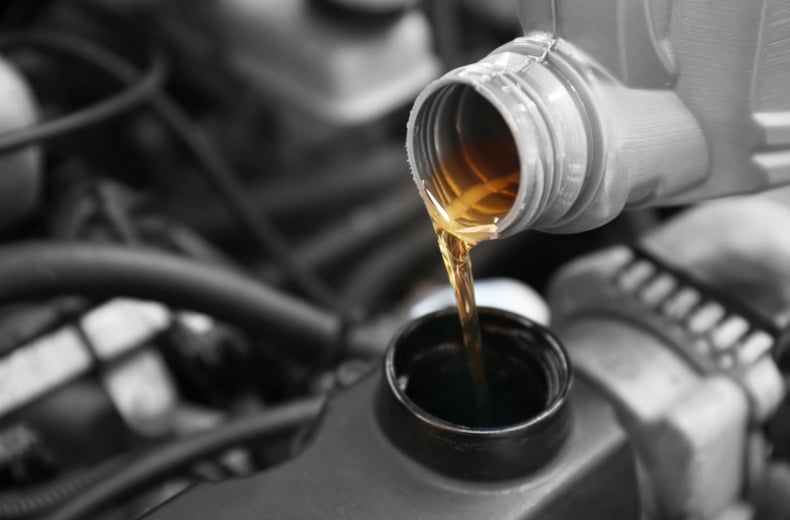
Oil also becomes less free-flowing in cold conditions.
And that, in turn, puts additional strain on your car’s battery by making it harder for the engine to turn over and start.
What happens if you put the wrong oil in your car?
If your oil has too much cold viscosity (resistance to flow), you won’t be able to start your car in cold temperatures. On the flip side, excessive hot viscosity means engine components won’t be adequately protected, leading to premature wear.
Also, take your time visiting the fuel station - don't put the wrong fuel in your vehicle.
How to fix putting the wrong oil in your car
Check your car’s handbook to see what type of oil the manufacturer recommends, and switch to a thinner grade if possible in winter.
Typical grades include 10W-30 and 5W-20, with the first number (followed by a ‘W’ for ‘winter’) denoting the oil’s thickness in cold weather. The lower the number, the thinner the oil.
For cars operating in very cold climes, even 0W oil is available.
Car playing up?
Get quality repairs at a fair price, plus a 12 month warranty with RAC Approved Garages.


Cars with carburettors
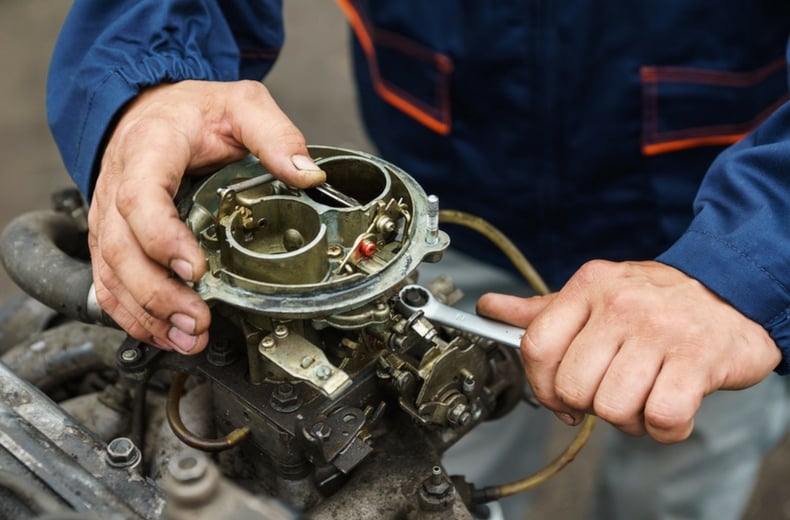
If your car was built more than 30 years ago, it’s likely to use a carburettor.
These regulate the mix of fuel and air for combustion but are particularly vulnerable to icing up.
If the nozzles of the carburettor become clogged with ice, the engine may not start – and certainly won’t run properly.
With your left foot on the clutch, try gently pushing the accelerator pedal when you start the engine in cold weather.
This will pre-inject a small quantity of fuel to give the engine a helping hand.
All modern cars use fuel injection, and thus aren’t affected by this problem.
- How to keep your windscreen clear this winter
- Car jerking and shuddering? Here's what to do
- Winter driving tips - your complete guide
If you need a repair, but in with an RAC Approved Garage or RAC Mobile Mechanic
Service, repair or MOT?
You can trust the RAC with our local approved garages and NEW mobile mechanics.
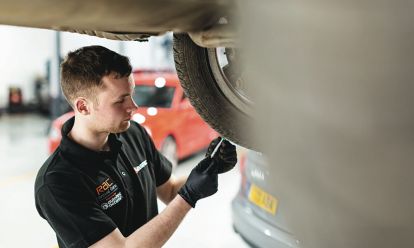

Car door frozen shut
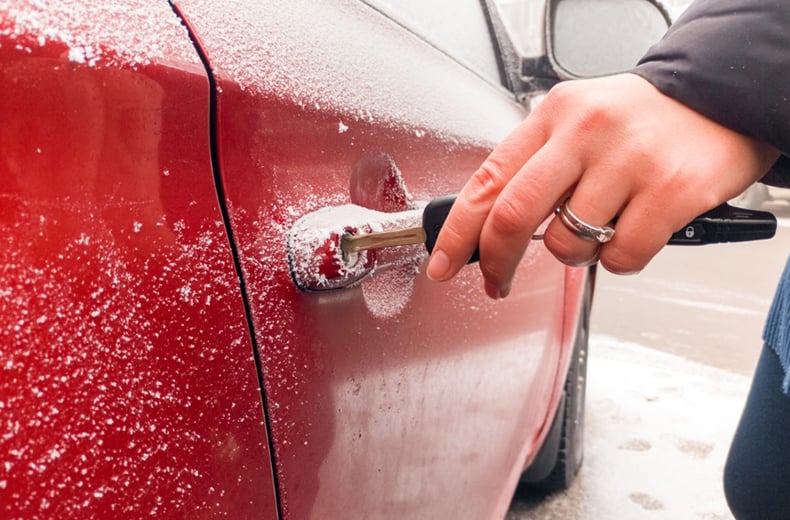
Sometimes it can be difficult just getting into your car! Dealing with icy temperatures as a car owner can be challenging. These two tips could save you much-needed time:
- Use a little silicone-based furniture polish on the rubber door seals. It helps prevent doors getting stuck when it freezes. It’s best to apply the polish with a cloth, so you don’t spray it onto the vehicle’s paintwork
- If the locks are frozen, try warming your key. You could also inject the lock with the appropriate anti-freeze, or spray it with WD40
To purchase oils to top up your vehicle, we suggest heading over to the RAC Shop to browse our range of oils and lubricants.
Car won't start in the cold FAQs
- Why will my car not start when it’s cold?
Your car may not start in cold weather because of problems in a number of areas.
- battery: cold temperatures affect the chemical process inside the battery and reduce its ability to hold a charge.
- alternator: alternator belts can become cracked in cold temperatures, making it more difficult to power your battery.
- starter motor: engine oil becomes thicker in cold weather, which increases friction and makes the starter motor work harder to spin the engine.
- car fuel system: car fuel systems can become contaminated with water that freezes in cold weather, ice prevents the system from working altogether.
- oil: becomes thicker in cold temperatures, putting strain on your battery.
- carburettor: nozzles are prone to icing up preventing the mixture of fuel and air from being properly regulated.
- What do I do if my car won't start in the cold?
Although your car might not start for a number of reasons, there is a routine you can go through to give you the best chance of getting things up and running. Try these steps:
- turn everything off: This includes headlights and radios. Anything that uses electricity uses your battery and will drain it further. It’s good practice to leave your engine running for a while before switching accessories back on.
- press the clutch as you turn the ignition: This lightens the load for your battery and makes starting your engine a much easier task.
- check your battery leads: Look under the bonnet for your battery and check for signs of corrosion – usually a salty, crusty substance. This will need to be cleaned. Disconnect your cables (negative first) wearing goggles and gloves, then clean with a toothbrush and a mixture of baking soda and water. When replacing the cables, always connect the negative one first.
- top up your engine oil: Use your dipstick to check your oil level. If things are looking low, top it up. Check your car’s handbook to see what type of oil the manufacturer recommends, and switch to a thinner grade if possible, in winter.
- How does extreme cold affect your car?
Cold temperatures affect the chemical process inside the battery and reduce its ability to hold a charge. It also thickens engine oil, increasing friction in the starter motor and forcing it to work harder. Your alternator belt is also prone to cracking in extremely cold conditions. Fuel systems and your carburettor can also become contaminated with ice and malfunction.
The cold can also affect parts of your car away from your engine. Rubber on windscreen wipers can become brittle and prone to damage, tyres can deflate as the temperature of the air inside drops and contracts and, of course, your windscreen can ice over.
- Is it safe to drive in extreme cold?
Driving in extreme cold comes with added risks. Stopping distances can increase ten-fold in ice and snow, and visibility is seriously reduced in heavy snowfall.
Road safety charity Brake urges drivers to follow an ABC to stay safe in winter conditions:
Using low revs, moving off in second gear and increasing your stopping distance will make you a safer driver. For more tips on what careful, cautious driving entails, follow our advice on how to tackle driving in the snow.- Avoid driving where possible and never set off when it’s snowing heavily
- Be prepared by keeping your car well maintained and packing for an emergency breakdown
- Careful, cautious driving will minimise any accidents
To reduce your chances of breaking down in cold weather, we recommend following the acronym FORCES for regular DIY checks. That’s Fuel, Oil, Rubber, Coolant, Electrics, Screen wash.
- How do you get a frozen car door open?
A frozen car door can be opened by pouring warm (not hot) water over the affected area. If your lock appears to be frozen, try using a de-icer spray.
- At what temperature do cars stop working?
There is no set temperature at which all cars stop working. It’s more useful to think about the adverse effects of cold weather in different parts of your car.
We know that the freezing point of water is 0° Celsius and water can contaminate the car fuel system and collect on the nozzles of your carburettor causing engine failure. But there is no freezing point for motor oil. As it gets colder, it becomes more viscous, or thicker.
A fully charged battery will freeze around -57°C, while a fully discharged battery will freeze at around 0°C.
- Can extreme cold kill a car battery?
A fully charged battery will freeze around -57°C, a fully discharged battery will freeze at around 0°C. Your battery probably won’t work after thawing out, if it does it will be weaker and won’t last as long. It’s best to replace a battery that’s been frozen.
- How do I protect my car in extreme cold weather?
The best way to protect your car from cold weather is to park it in a garage. If that option isn’t available, an outdoor car cover will reduce the chances of your windscreen icing up, wiper blades from becoming brittle and water reaching your carburettor and car fuel system.
The best way to protect your engine in cold weather is to use the correct type of motor oil and make sure there’s enough of it in the system. Check your vehicle handbook for advice and use motor oils with a lower ‘W’ number e.g. 5W-30, in winter months.
There are a number of maintenance checks you can regularly make that will help prepare your car for cold weather driving. Always remember FORCES – that’s Fuel, Oil, Rubber, Coolant, Electrics, Screen wash.
- Does petrol freeze in cars?
The freezing point of petrol is -60°C. As the lowest ever recorded temperature in the UK was -27.2°C, you can be confident that the contents of your tank won’t solidify any time soon!
- Does motor oil freeze?
Motor oil doesn’t freeze but becomes increasingly viscous, or thick, in cold weather making it difficult to process around a vehicle. Use an oil with a lower ‘W’ number, e.g. 5W-30, during winter months to reduce wear and tear on your engine.
- How cold is too cold for a car wash?
As water freezes at 0°C, washing your car at, or below this temperature can become more difficult. However, the winter typically sees more dirt and grime on the roads. Grit and salts spread to prevent the effects of adverse weather can damage the exterior of your car.
When washing your car in winter, it’s best to let your car run for a while and heat up both before and after to prevent water freezing. Try to wash your car at the middle of the day when temperatures are at their highest.
Service, repair or MOT?
You can trust the RAC with our local approved garages and NEW mobile mechanics.



